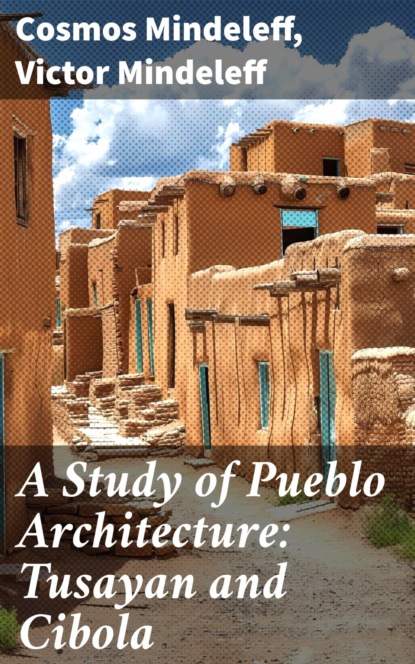Objętość 360 stron
0+
A Study of Pueblo Architecture: Tusayan and Cibola
O książce
In the collection 'A Study of Pueblo Architecture: Tusayan and Cibola,' readers are invited to explore the rich tapestry of Puebloan architectural heritage through a meticulously curated array of essays and analyses. This anthology transcends a mere architectural survey; it unveils the intricate relationships between culture, environment, and societal evolution as expressed in the physical spaces of Tusayan and Cibola. With its diverse range of literary styles'Äîspanning analytical studies, detailed descriptions, and interpretative narratives'Äîthe book captures the nuanced layers and regional distinctions inherent in Pueblo structures. The anthology serves as both a deep dive into the specificities of Pueblo architectural methods and an exploration of the broader schema within which these structures were conceived and evolved. Editors Cosmos and Victor Mindeleff have gathered insights from various scholars whose expertise spans anthropology, history, and architecture. Their collective voices animate a dialogue that bridges past and present, infusing historical perspective into contemporary interpretations. Aligned with the late 19th-century movement towards preserving Indigenous knowledge, this anthology honors the cultural legacy of Pueblo peoples. The contributors'Äô diverse backgrounds invigorate the collection, presenting a mosaic of thought that deepens understanding of both the artistic and functional aspects of Pueblo architecture. This anthology stands as an essential resource for anyone seeking to comprehend the complexities of Puebloan architectural traditions. It offers a unique opportunity to witness the convergence of diverse scholarly perspectives in a single, informative volume. Perfect for historians, architects, and curious readers alike, 'A Study of Pueblo Architecture: Tusayan and Cibola' delivers rich educational insights and fosters meaningful dialogue across disciplines. Delve into this collection not only to appreciate its historical architecture but also to participate in an ongoing conversation about cultural preservation and interpretation.
